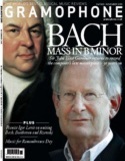Texte paru dans: / Appeared in: |
|
|
Outil de traduction (Très approximatif) |
|
|
Reviewer: David Fallows
This is one for those who have fixed views on the speed of 16th-century music: the marvellous 1989 recording of Taverner’s Corona spinea Mass by The Sixteen with Harry Christophers lasts just over 40 minutes in what most people would view as a beautifully musical reading; the recent and highly praised recording by the Choir of St Mary’s Cathedral, Edinburgh, under Duncan Ferguson lasts 33 minutes, widely viewed as giving a necessary injection of energy into Taverner’s music though to my ears losing far too many gorgeous details on the way and rather approximating many others; now Peter Phillips and The Tallis Scholars weigh in at almost 48 minutes. As I said two years ago about The Tallis Scholars’ recording of Taverner’s Gloria tibi trinitas Mass (11/13), I tend to like Phillips’s tempi: each phrase has its individuality, turned to perfection by his singers. And the textures of Taverner’s six-voice polyphony are marvellously transparent.
As I also said two years ago, the makeup of that recording, with the three Magnificat settings of Taverner, looked very much as though Phillips was aiming towards an intégrale of Taverner’s music. Here he adds the two five-voice Dum transisset Sabbatum settings, once again creating a package that will fit logically into a complete set. That would be a most marvellous contribution to the catalogue: Taverner is a seriously great composer but somehow not as widely recognised as, say, Tallis and Byrd. What I like slightly less is the balance. The high pitch that Phillips adopts leaves the sopranos consistently singing very high indeed: as before, Janet Coxwell and Amy Hawarth are absolutely amazing in this work with perhaps the most complex soprano lines of the entire 16th century; but they do also occasionally sound forced and tired, and my own preference would be for the pitch-level a semitone lower adopted by Christophers and The Sixteen. About 20 years ago there was a lot of discussion of appropriate pitches for English polyphony of the 16th century: there was little agreement except on the point that it was too inflexible simply to jack everything up a minor third from modern concert pitch. This The Tallis Scholars are still doing, and I’m not sure it’s a good solution. All the same, it is a gorgeous recording, and I take pleasure in welcoming it in the same week that The Tallis Scholars are giving their 2000th concert: keep going! |
|
|
|
|
|
Cliquez l'un ou l'autre
bouton pour découvrir bien d'autres critiques de CD |
|




